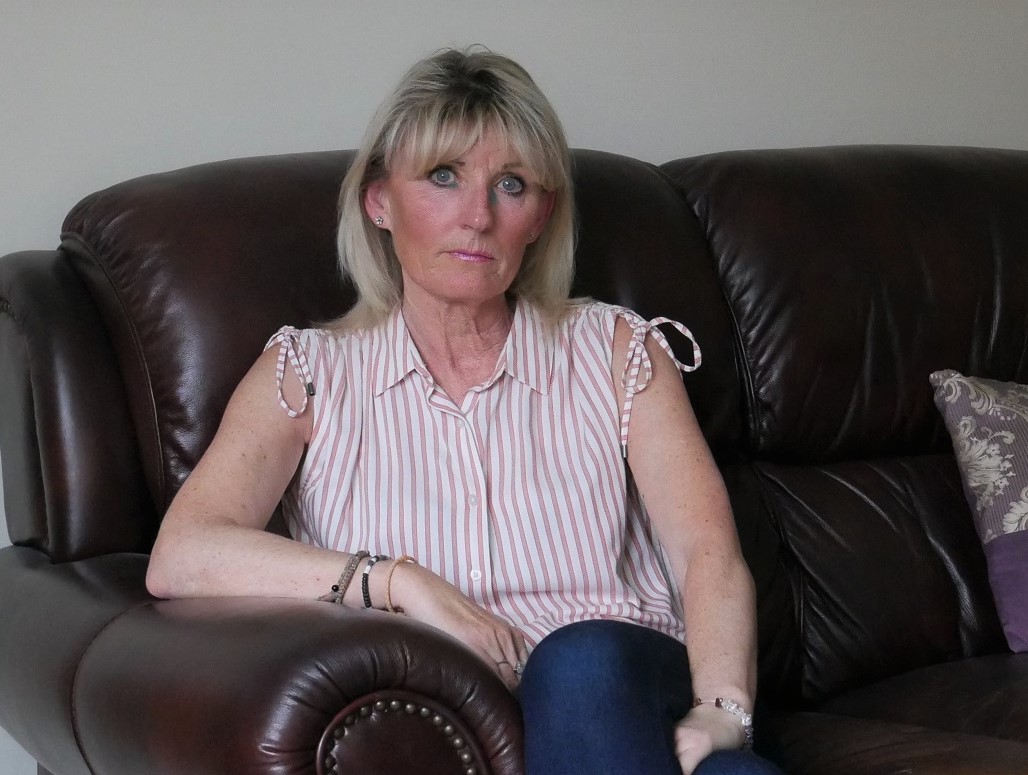Cancer survivor Sue joins calls for Smokefree 2030 and make big tobacco pay for prevention

OVER 15 people a day in the North East die from smoking [2]] zand 280 children a day in England start smoking [1].
Those are the stark figures published today as a North East cancer survivor joins health leaders nationally to call on the Government to deliver on its ambition to be smokefree by 2030 [3] and make tobacco companies pay to end the tobacco epidemic.
Today Sue Mountain is helping launch the campaign for a Smokefree 2030 with publication of a Roadmap setting out what the Government needs to do to deliver on its ambition.
Top of the list is legislation to require the tobacco manufacturers to finance a Smokefree 2030 Fund to pay for the measures needed to end smoking. [4]
In the North East smoking kills around 5,300 people a year – 15 deaths a day – and results in around 259,000 hospital admissions or outpatient appointments each year [7].
Ailsa Rutter OBE, Director of Fresh, said: “In the North East we have suffered the most with heavier smoking rates and an appalling rate of smoking related diseases. I lost my own Dad prematurely to smoking related COPD and every day I think about all we have lost out on as a family.
“There is a point when we have to say enough is enough. Like leopards, tobacco companies don’t change their spots. Tobacco companies make huge profits from an addiction which not only robs smokers of many years of life but also costs communities, families, every GP surgery, every local authority, every hospital and is a major driver of poverty. They should be made to pay for prevention.”
She added: “We have much to be proud of nationally in reducing smoking and we have seen the highest falls in smoking in England here in the North East, thanks to the efforts of many partners working together including local authorities and the NHS, but it is still the key cause of the big life expectancy gap between the most and least affluent groups. It is a big driver of health inequalities and we now need concerted action to make smoking history for more children.”
Ex-smoker Sue Mountain, from South Tyneside, underwent laser treatment in 2012 after a biopsy revealed she had laryngeal cancer. The cancer returned in 2017 which required radiotherapy every day for four weeks.
Sue Mountain, said: “It is really important to me that we now work hard as a country to stop future generations ending up in my situation, having to undergo radiotherapy or chemotherapy, losing the career you love and having years of worry about whether cancer will return. And I am one of the lucky ones.
“There are other families less fortunate who have had to organise funerals for someone they love thanks to smoking or suffer from a debilitating disease which robs them of years of healthy life. We need to do everything we can to help smokers to stop and to prevent children taking it up in the first place. The government has set an ambition for a smokefree generation by 2030 – they need to make this happen.
“It is a scandal that the tobacco companies are the ones making huge profits and at the same time are trying to get young people around the world hooked. They have been sued for the harm they cause in the United States. It is time that here in the UK they should be made to pay a fee towards prevention like the polluter they are.”
She added: “I started smoking when I was eleven to fit in – as a kid you don’t realise how addictive it is. I was addicted. I needed that nicotine craving. “When I look back at what I have spent on cigarettes, it must have been £50,000 at least. It could have bought me half a house, instead of cancer.
“I don’t think I could go back to my job as a lecturer now because my voice is still very hoarse after the radiotherapy. But it’s my family it has affected. It was hard seeing my three daughters worry. My grandson worries. And now once you’ve had cancer, you worry every day and think: “is it going to come back?” So I wish I had never smoked. You don’t want to hear that word “cancer” diagnosed.”
People in the North East strongly support tobacco manufacturers being required to pay a levy or license fee to Government for measures to help smokers quit and prevent young people from taking up smoking. 73% of the North East support this, with only 7% opposing it.
Since last July when the government first announced its intention for England to be smokefree by 2030, over 50,000 children under 16 have started smoking in England [5]. That’s enough to fill St James’ Park or the Stadium of Light. Two thirds of those who experiment with smoking go on to become daily smokers. [6]
There are over 339,000 smokers in the North East, causing around 5,300 early deaths each year in the region. In 2018 this resulted in:
- A cost of £132 million for the North East NHS– including 1.2 million GP consultations, over 36,000 hospital admissions, 223,000 outpatient visits and over 411,000 practice nurse consultations for smoking-related conditions.
- A £50 million cost in social care for current and former smokers – over £41m of that from local authority social care budgets and over £9m paid by individuals or families. The average age at which smokers need social care for the first time is 62, compared to 72 for never-smokers.
- Over £430 million lost from the regional economy in the North East as a result of lost productivity due to smoking; including £58m in absenteeism
REFERENCES
[1] [Methodology: Calculated by the Cancer Intelligence Team at Cancer Research UK, January 2020. Estimated number of new child smokers in England each day on average between 2019 and 2021. Calculated using Smoking, Drinking and Drug Use in Young People in England survey data. For 2014-18, percentage of new smokers (‘regular’, ‘occasional’, or ‘used to smoke’) each year was calculated for age 12, 13, 14 and 15; for example the percentage of smokers aged 12 in 2017 was subtracted from the percentage of smokers aged 13 in 2018. For age 11 all smokers were considered new smokers. 2015 and 2017 figures were estimated (average of surrounding years) as no surveys were carried out in those years. Percentage of new smokers in England was applied to England population estimates to obtain the number of new England smokers. The 2014-18 trend in estimated number of new child smokers in England each year was projected forward to obtain estimates for 2019-21. Yearly figures were divided by 365 to obtain daily figures
[2] Action on Smoking and Health – Local toolkit on tobacco https://ash.org.uk/ash-ready-reckoner/
[3] This has been defined as when smoking rates are 5% or less. (see Towards a Smokefree Generation. A Tobacco Control Plan for England).To be smokefree is to reach a tipping point when smoking is no longer normalised in society, and the end of smoking is in sight.
[4] For more information about the Smokefree 2030 campaign, including the Roadmap and the full list of endorsing organisations see smokefreeaction.org.uk/Smokefree2030
[5] Methodology: Calculated by the Cancer Intelligence Team at Cancer Research UK, January 2020. Estimated number of new child smokers in England each day on average between 2019 and 2021. Calculated using Smoking, Drinking and Drug Use in Young People in England survey data. For 2014-18, percentage of new smokers (‘regular’, ‘occasional’, or ‘used to smoke’) each year was calculated for age 12, 13, 14 and 15; for example the percentage of smokers aged 12 in 2017 was subtracted from the percentage of smokers aged 13 in 2018. For age 11 all smokers were considered new smokers. 2015 and 2017 figures were estimated (average of surrounding years) as no surveys were carried out in those years. Percentage of new smokers in England was applied to England population estimates to obtain the number of new England smokers. The 2014-18 trend in estimated number of new child smokers in England each year was projected forward to obtain estimates for 2019-21. Yearly figures were divided by 365 to obtain daily figures.
[6] ] Birge M, Duffy S, Miler JA, Hajek P. What Proportion of People Who Try One Cigarette Become Daily Smokers? A Meta-Analysis of Representative Surveys. Nicotine Tob Res. November 2018. doi:10.1093/ntr/ntx243
[7] Action on Smoking and Health – Local toolkit on tobacco https://ash.org.uk/ash-ready-reckoner/
[8] The consultation on Advancing our health:prevention in the 2020s closed on 14th October 2019. Cabinet Office. Consultation principles: guidance. March 2018. “Government responses to consultations should be published in a timely fashion: Publish responses within 12 weeks of the consultation or provide an explanation why this is not possible.”
[9] NHS Digital. Statistics on Smoking, England – 2019 [NS] [PAS]
[10] US Centers for Disease Control. Smoking & Tobacco use: Fast facts. 2020
